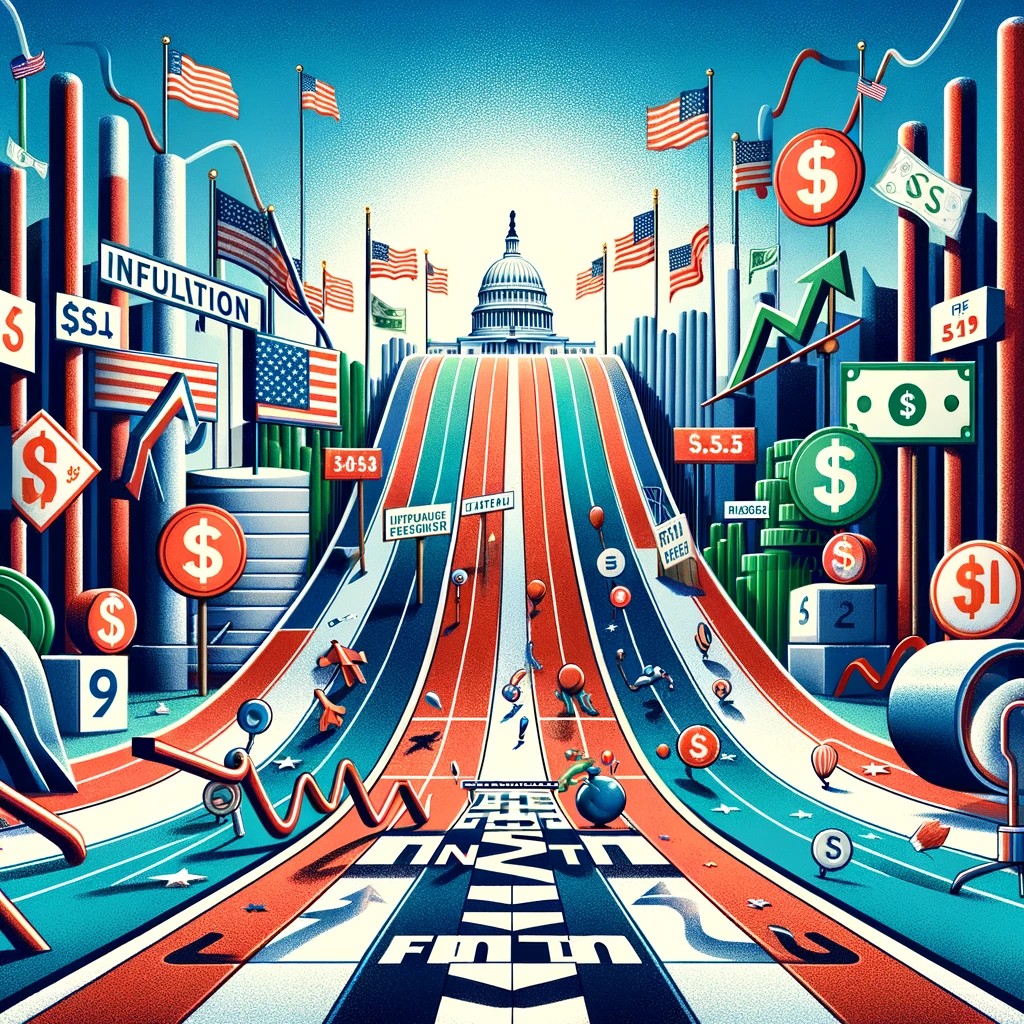The U.S. economy’s struggle with inflation is like a marathon with a finish line that keeps moving. Just when we thought we were close to beating inflation, it turns out the hardest part is yet to come. Mohamed El-Erian from Allianz and Queens’ College at the University of Cambridge suggests that the final leg of this journey is going to be tougher than what we’ve already seen. This isn’t just a financial skirmish; it’s an epic battle where the endgame is trickier than anyone expected.
Inflation, that pesky little thing, measures how rapidly prices for various goods and services – from your avocado toast to the latest iPhone – are climbing. Ideally, policymakers aim to keep this annual increase around 2%. The U.S. seemed to be on track with the Consumer Price Index (CPI), a critical gauge of inflation, dropping from a staggering 9.1% in June 2022 to a more manageable 3.4% by December 2023. But don’t break out the champagne just yet!
Goods, Services, and the Tricky Path Ahead
The complexity in reducing inflation lies heavily on the services side of the economy. These aren’t your tangible products like sneakers or laptops. We’re talking about experiences – think rent, haircuts, and theater tickets. Services are a big deal, making up 59% of the CPI, excluding energy services.
On the flip side, tangible goods, despite making up 21% of the CPI, have seen their inflation rates cool off. Thanks to supply chains getting their act together, inflation in this area is almost non-existent now. However, don’t expect broad disinflation to come from this sector. There’s a twist – geopolitical tensions, like the Houthi rebel attacks on ships in the Red Sea, could disrupt this calm and potentially spike goods inflation again.
The Sticky Situation with Service-Sector Inflation
Now, let’s talk about the stickier part of the equation – services inflation. Despite a decrease from over 7% last year, it’s still hovering around 5.3%. Housing costs, which are more than a third of the overall CPI, are a significant contributor to this stubbornness. The experts, like Gargi Chaudhuri from BlackRock and Mark Zandi from Moody’s Analytics, believe that although shelter inflation should moderate, it’s a question of when and how fast.
But wait, there’s more! The labor market adds another layer of complexity. A hot job market means higher wages, which is great for your wallet but can fuel inflation if businesses hike prices to cover these costs. It’s a delicate balancing act, and so far, businesses seem to have gotten comfortable with raising prices.
Amidst all this, not everyone is convinced that the final stretch of this inflation battle will be the hardest. Paul Ashworth from Capital Economics calls this theory “nonsense,” pointing out that the U.S. Federal Reserve’s preferred inflation gauge, the Personal Consumption Expenditures price index, is already showing positive signs.
As we approach the U.S. Federal Reserve’s next policy meeting on January 30-31, all eyes are on their next move. While some factors are turning in the Fed’s favor, others remain unresolved. The challenge is to see beyond the base effects and gauge whether businesses are truly easing up on price hikes.
In the grand scheme of things, the final lap in the U.S. inflation fight comes down to the service sector. Industries across the board, from small businesses to national chains, are grappling with the decision to raise or hold prices. The COVID era has muddled the waters, making it challenging to determine what ‘normal’ pricing looks like.
As the U.S. treads this final, tricky stretch of its inflation fight, one thing is clear – there’s no easy path to victory. The goal is to achieve a delicate balance where inflation is tamed without derailing economic growth. It’s a tightrope walk, and the U.S. economy is the daring acrobat trying to reach the elusive finish line without a safety net.
A Step-By-Step System To Launching Your Web3 Career and Landing High-Paying Crypto Jobs in 90 Days.
